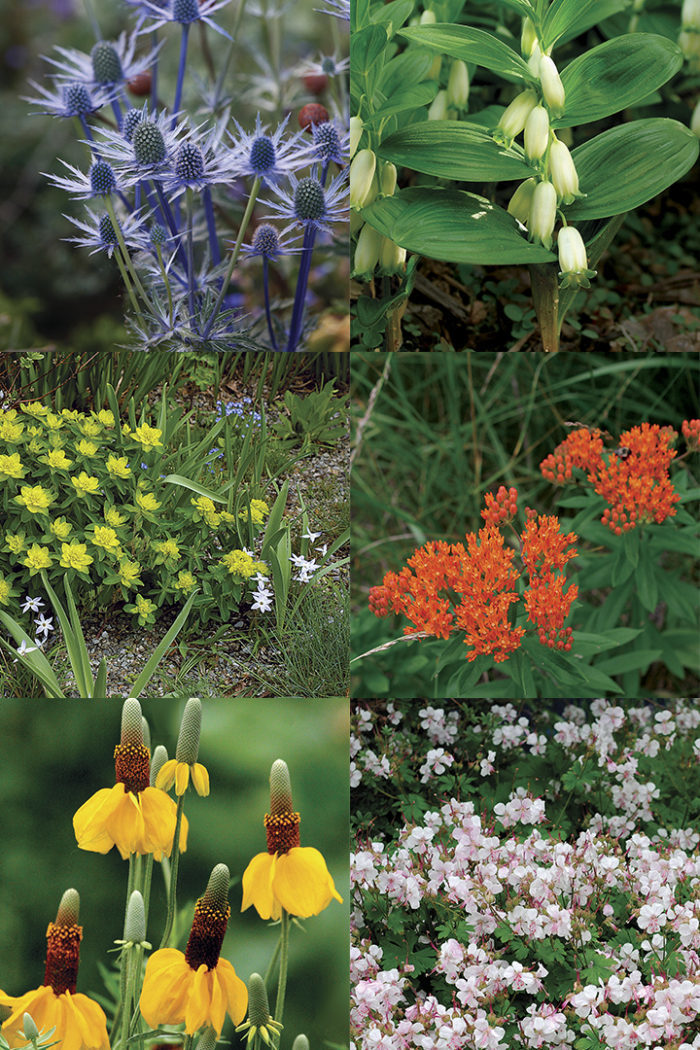
When you live in a cold climate, winter can wreak havoc on your plants. During cold, dry, windy winters, perennials can die by spring from desiccation, while during cold, wet, snowy winters, perennials often rot at the roots. We asked experts from two different extreme climates—Dan Johnson in Denver and Scott Endres in Minneapolis—to recommend perennials that can take anything their tough winters throw at them and come back even stronger, spring after spring.
Plants That Can Take Cold and Dry
Outwit winter in dry climates
| Challenge | Solution |
| Wildly fluctuating temperatures | Cover sensitive plants with loose evergreen boughs to moderate temperatures without impeding air circulation. |
| Occasional wet soil | Mulch with gravel to provide excellent drainage. |
| Cold, dry winds | Choose drought-tolerant plants. |
In the West, wide-open spaces, blue skies, and low humidity make for postcard-quality vacations, but they also present challenges for those inclined to garden. Low humidity desiccates plants that have thin bark or delicate leaves. Intense sunlight may burn plants that would like full sun elsewhere. You might imagine that these tribulations are restricted to summer, but winter often intensifies the challenge. Dry, cold winds can freeze-dry plants to their core, which is especially stressful for broadleaf evergreens and plants with thin bark. Dry air and winter sunshine create wide temperature swings of up to 40°F, with 50°F days followed by bitter cold nights in the teens. Repeated freezing and thawing can dry out soil and heave new plants out of the ground.
The steppes and high deserts of the West demand specially adapted plants, whether native or from similar climates elsewhere. Choosing the best plants can help you beat the odds and makes for dazzling, uniquely western summer gardens.
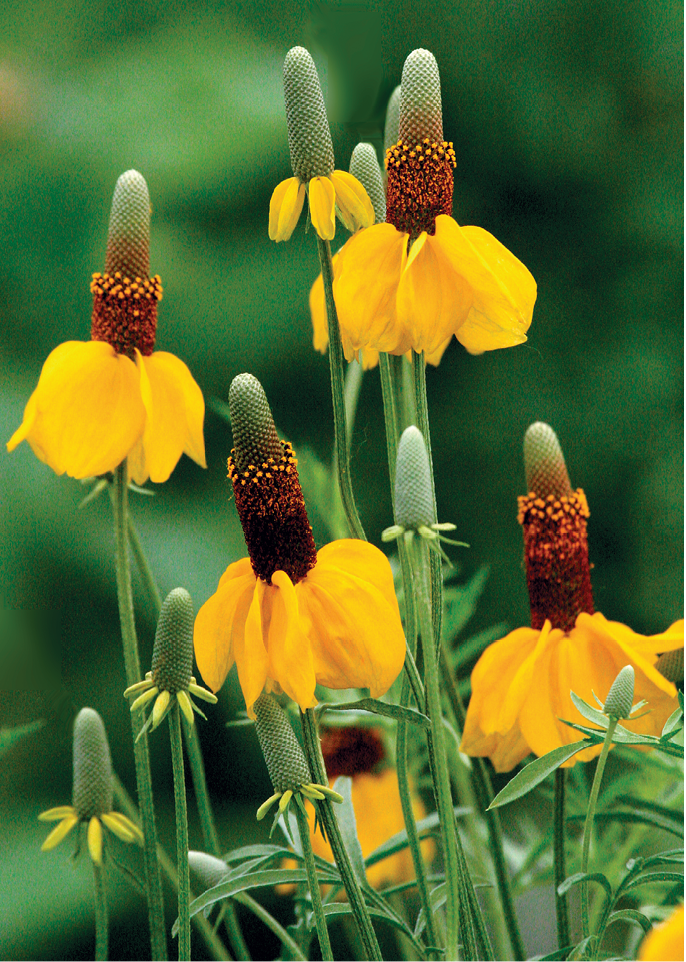
Few plants have the cheerful demeanor of Mexican hat (Ratibida columnifera and cvs.). Clear gold-reflexed petals dance around a central cone like a hula skirt. The flowers stand neatly above the foliage like a dance troupe poised to perform. This tough-as-nails gem thrives on neglect and reseeds easily into open ground. Its basal rosettes of foliage are evergreen, and the dried seed heads persist into winter.
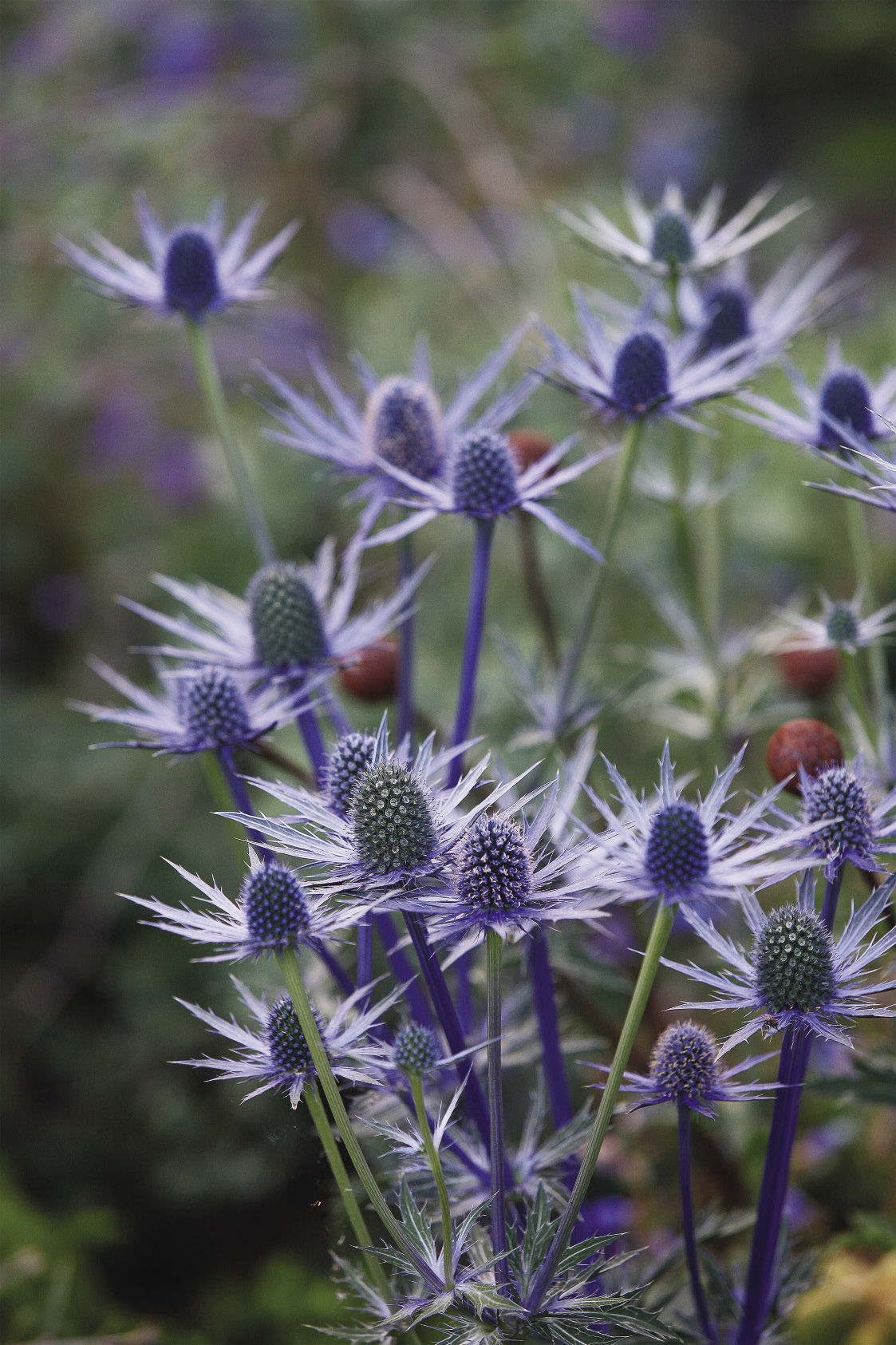
Sea hollies come in a wide range of forms and temperaments. Some like it wet, some reseed wildly, some hide among rocks, and some tower head high. Amethyst sea holly (Eryngium amethystinum) is one of the best. A comfortable border-size plant, it stays where you put it and never fails to elicit inquiries. Deep roots make it tough and care-free. Sharply toothed leaves give a preview of the spine-tipped flowers that appear in midsummer. The starry bracts that surround the flowers appear to be snipped carefully out of iridescent sheets of painted metal. The effect is long lasting, and the flowers may be cut and dried or left to stand into winter.
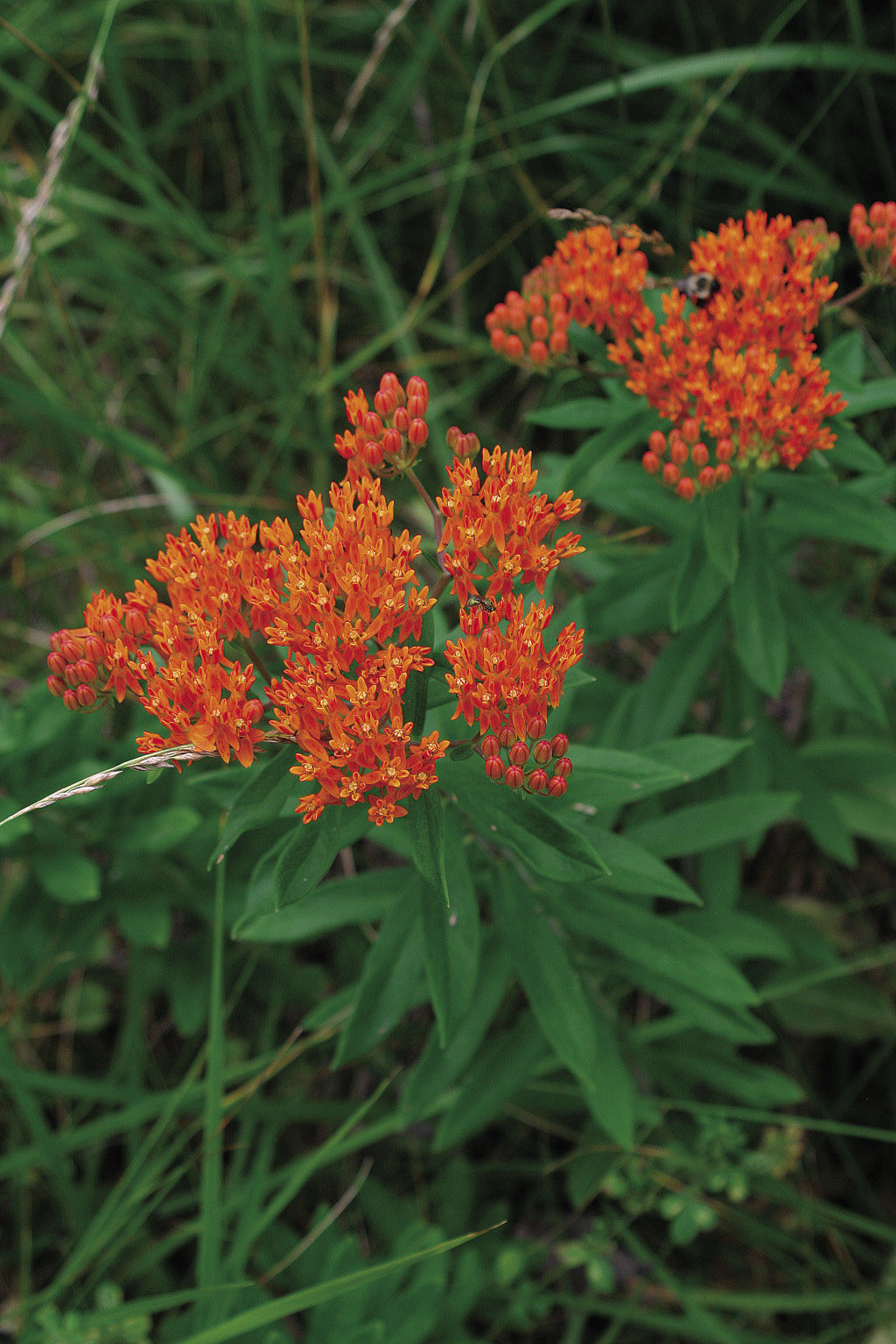
Few flowers warm up a border like the glowing flowers of butterfly weed (Asclepias tuberosa and cvs.). This milkweed does not spread underground like some of its genus, and it’s one of the few milkless members of the milkweed family. A deep taproot ensures drought tolerance once established. The flowers are irresistible to butterflies and other native pollinators. Butterfly weed is spectacular when paired with other prairie inhabitants, like Mexican hat and blue grama grass (Bouteloua gracilis, USDA Hardiness Zones 5–9).
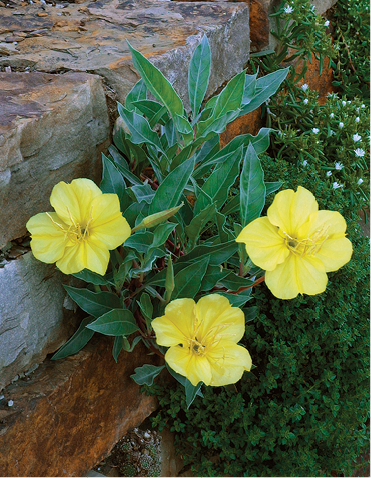
‘Silver Blade’ evening primrose (Oenothera macrocarpa ssp. incana ‘Silver Blade’) is a plant for every garden, resilient if abused and thriving even in unwatered gardens once established. Everything about this plant has a luminous quality, from its broad silvery leaves to its 3-inch-wide, lemon yellow flowers. It blooms from late spring into fall, continuing even after the first frost of the season. It performs as a lax ground cover, or you can show it off cascading over retaining walls or boulders. Deep tuberous roots ensure survival through heat, drought, and cold.
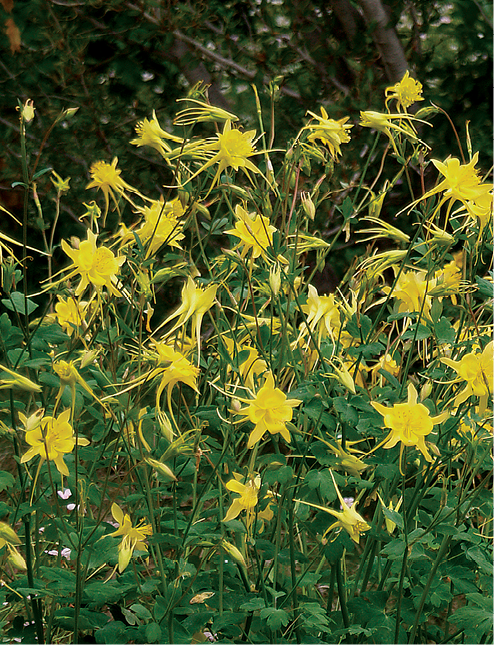
The blue columbine (Aquilegia caerulea, Zones 3–8) of the Colorado high country may have more notoriety, but its cousin, golden columbine (A. chrysantha and cvs.), will bloom longer and more reliably in most gardens. Found naturally in low canyons and vertical sandstone seeps, this cheerful wildflower thrives in the average sunny garden or in bright, dry shade with occasional water. Deadheading prolongs the display, but allow the last seed capsules to ripen as the plant will reseed itself where conditions suit it.
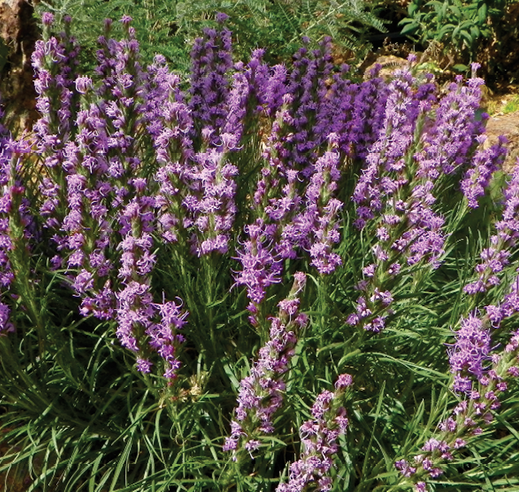
The most common blazing star available—even here in the West—is the eastern species, Liatris spicata (Zones 4–9), found in moist, sunny meadows within its range. But its shallow roots are poorly adapted to the drier conditions of the West. Luckily, we have one of our own. Dotted blazing star (Liatris punctata) survives with a deep taproot that sails through even our worst droughts and takes winter cold in stride. Its compact habit stands up to wind and even most hail.
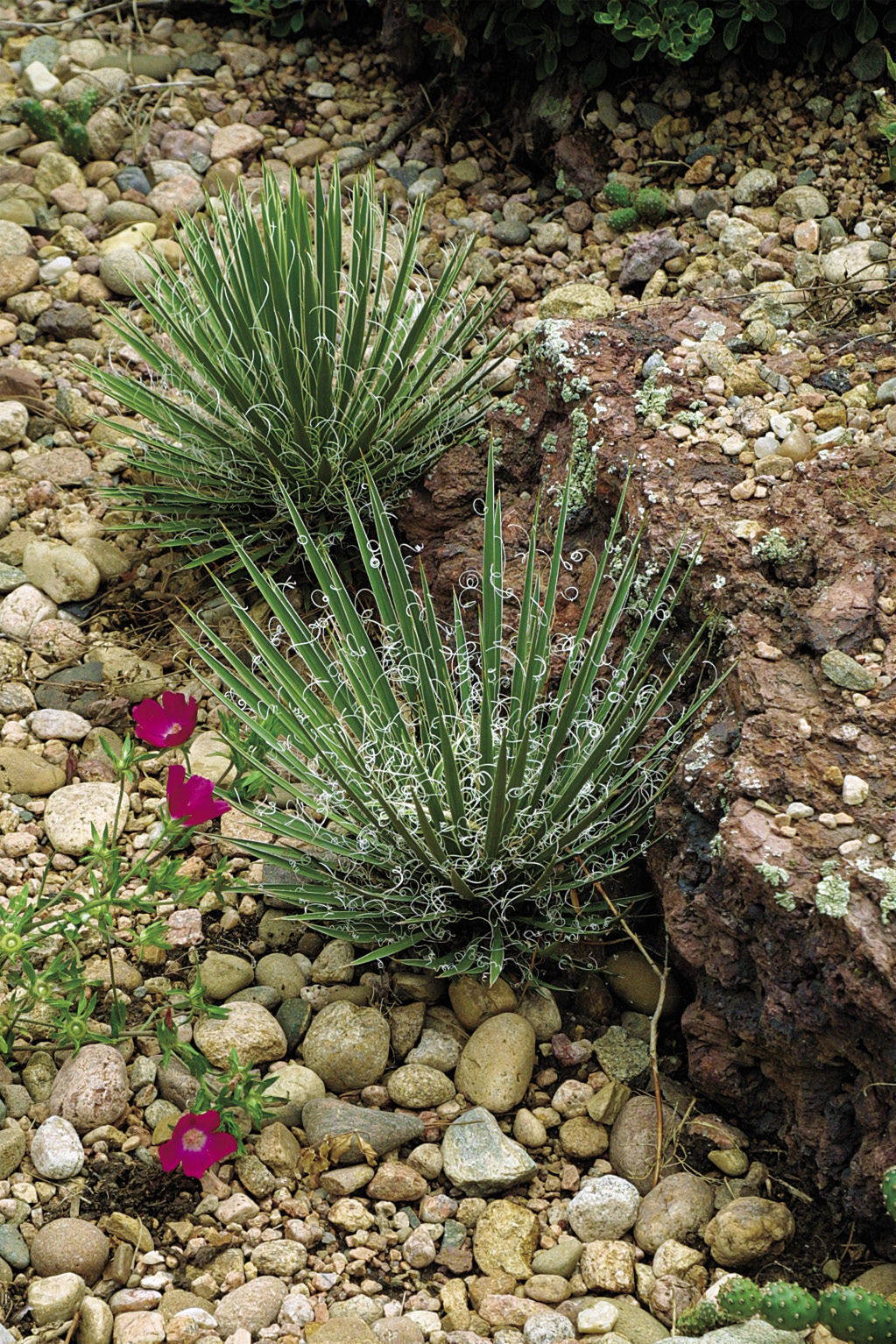
Any yucca will add a quintessential western feel to a garden. Experimentation is a worthy endeavor as even some of the tree-type species can prove hardy in the right microclimate. But for reliable success and manageable proportions, Harriman’s yucca (Yucca harrimaniae) is a safe and rewarding bet. Its leaves are stiff and narrow, with curling white threads along their edges. Sometimes referred to as the “dollhouse yucca,” selected forms of Harriman’s yucca may have rosettes as small as 6 inches across, accenting a dry border or rock garden like small works of fine art. Good drainage, winter dryness, and full sun are essential. Rhizomatous roots may slowly increase its spread and ensure its survival.
Plants That Can Take Cold and Wet
Outwit winter in wet climates
| Challenge | Solution |
| Extreme cold | Choose extrahardy plants, mulch with organic matter, and make use of microclimates. |
| Fluctuations in soil temperature (generally from lack of snow cover) | Mulch with organic matter in late fall. |
| Ice pack causing rot | Choose plants that aren’t sensitive to winter wetness, and mulch with organic matter. |
In the upper Midwest, the extremely cold winters and heavy snowfalls can be brutal, but ironically, the cold and the snow are the good guys. If doled out gradually, the cold sends our hardy plants into a deep, restful dormancy. Normal snowfalls provide a layer of insulation that stabilizes soil temperatures, protecting the sleeping beauties underneath. In theory, plants emerge in spring better than ever after their long nap. Trouble arises when Jack Frost doesn’t get the recipe just right. Drastic changes in air temperature make for less-than-ideal thaw/freeze cycles, causing ice pack at the soil surface and rotting the plants below. The same extreme temperature swings during dry winters without snow cover can cause huge temperature fluctuations in surface soil, resulting in plants going in and out of dormancy. A layer of mulch applied after the soil temperatures drop at or near freezing may minimize the threat of winter casualties, but it’s not guaranteed. Certain perennials will grow no matter what winter brings. Here are a few of my favorite perennials that never fail to impress with their endurance and good looks.
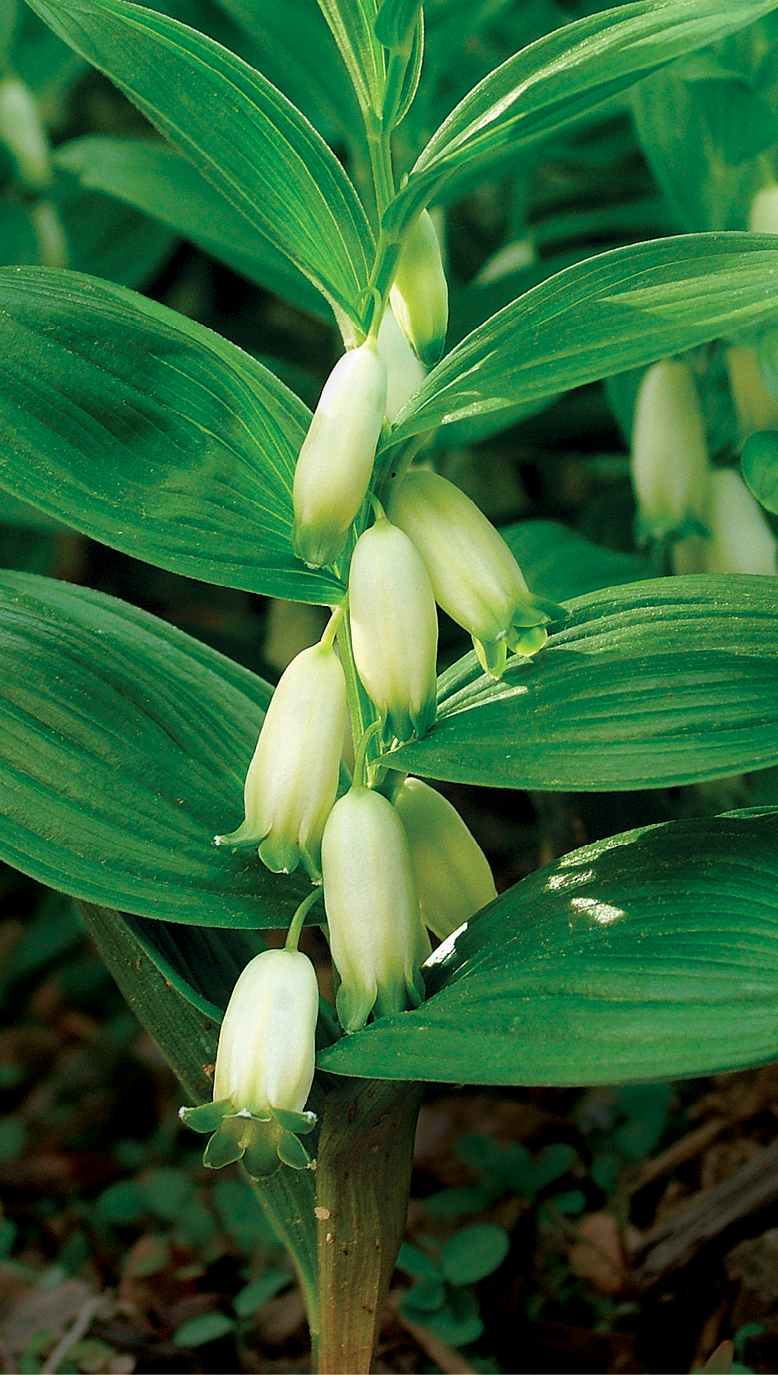
Underused but always appreciated, dwarf Solomon’s seal (Polygonatum humile) offers an alternative to the handful of shade-tolerant ground covers northern gardeners have in their back pocket. Cute, pudgy green stems and horizontally stacked leaves form tight colonies even in dry shade. And just when you think things can’t get any better, the plant also boasts delicate, bell-shaped white flowers in midspring. Because of its extreme hardiness, expect dwarf Solomon’s seal to become a fixture in your shade garden.
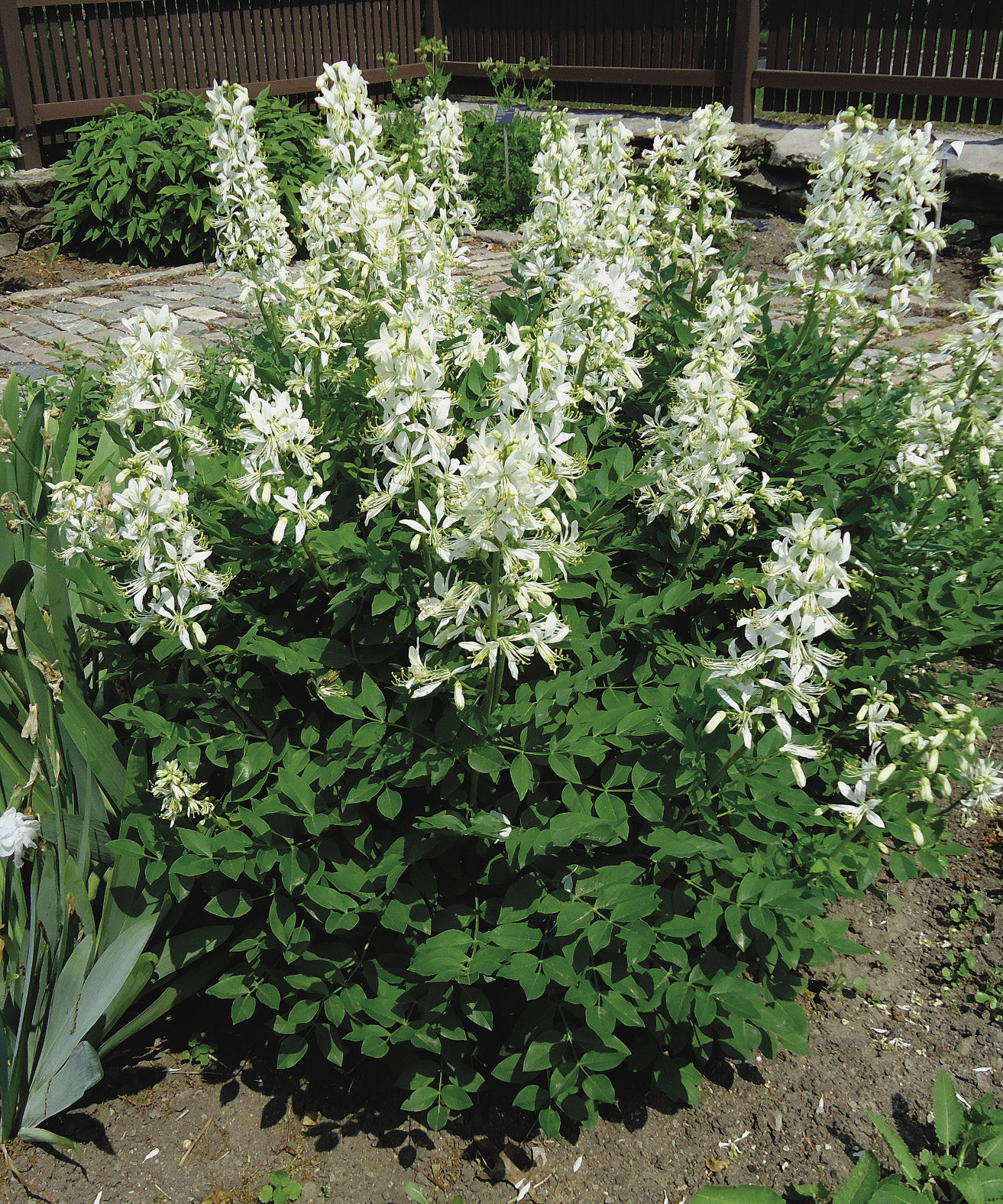
Don’t let the name gas plant(Dictamnus albus) fool you—this hardy perennial with the not-so-flattering name has sexy good looks when in flower and handsome seedpods and foliage the rest of the season. Never needing dividing or staking, this workhorse perennial gets better each year. It’s a bit slow to establish itself but will make up for lost time with decades of blooming.
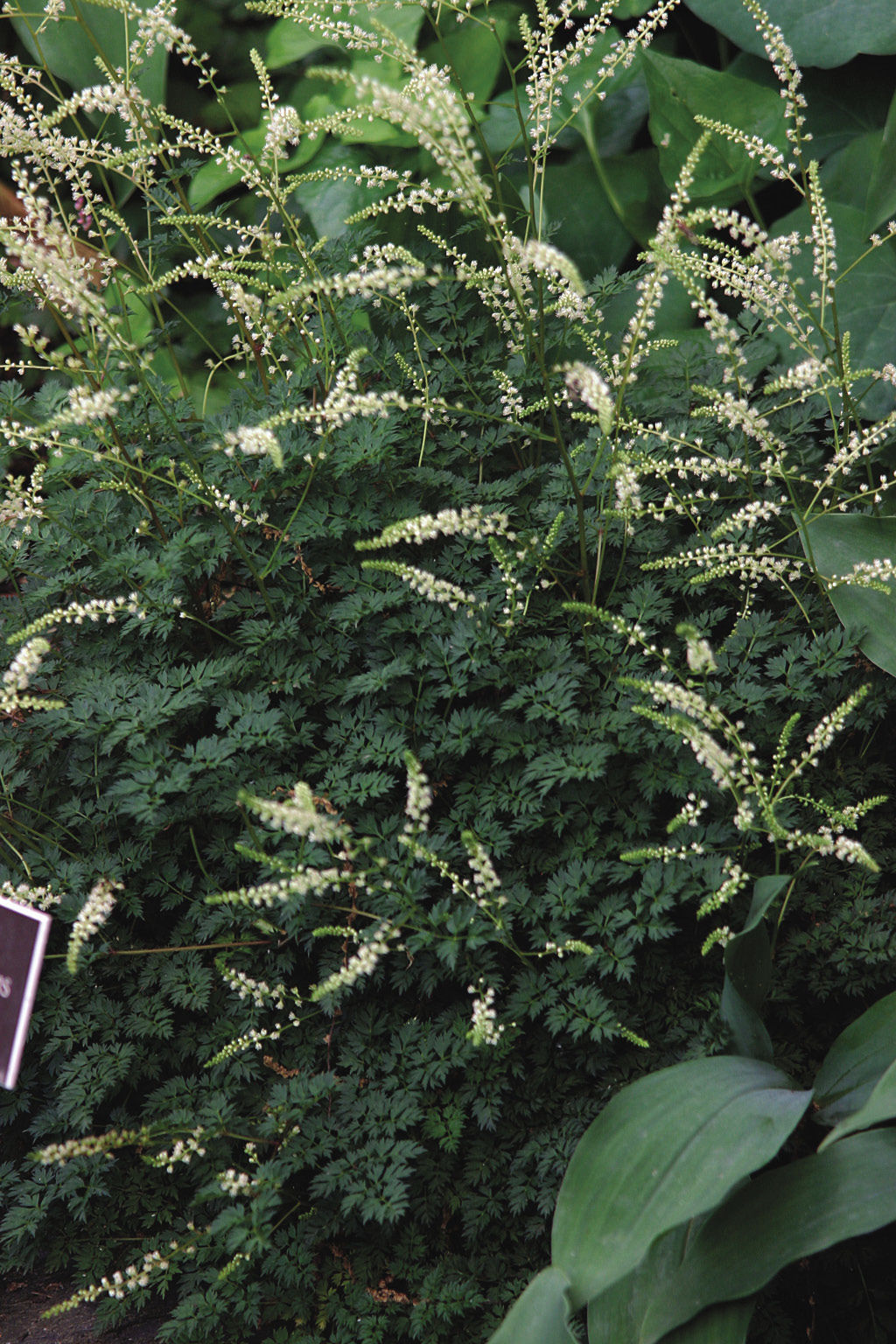
When I am looking for a tough shade plant that is not a hosta, I will often migrate toward goatsbeard (Aruncus spp. and cvs., Zones 3–9). Dwarf goatsbeard (Aruncus aethusifolius), one my favorites, boasts fine-textured, fernlike foliage and creamy white astilbelike flowers. This hardy soul will stand up to the harshest winters without batting an eye. Always reliable, always beautiful, and a complement to almost anything you pair it with, dwarf goatsbeard makes an impact that is never less than impressive.
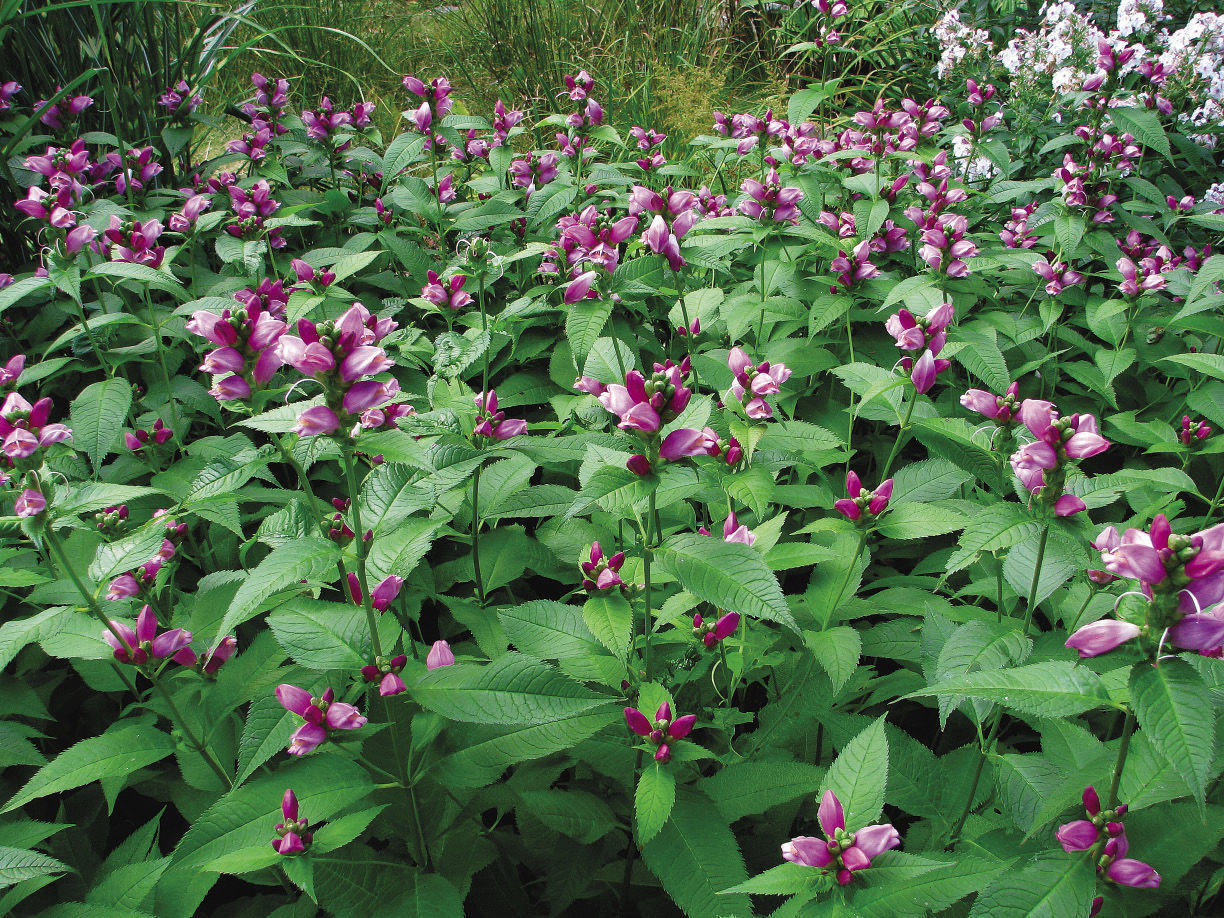
When everything else has finished blooming in the perennial border, ‘Hot Lips’ turtlehead (Chelone lyonii ‘Hot Lips’) picks up where others have left off. A late bloomer, the clear pink flowers are always a welcome addition to the notoriously green and bloomed-out garden of late summer and fall. ‘Hot Lips’ boasts glossier leaves than other turtleheads, adding to its star quality. ‘Hot Lips’ will spread into a noninvasive colony each year, and it easily transplants to other parts of the garden.
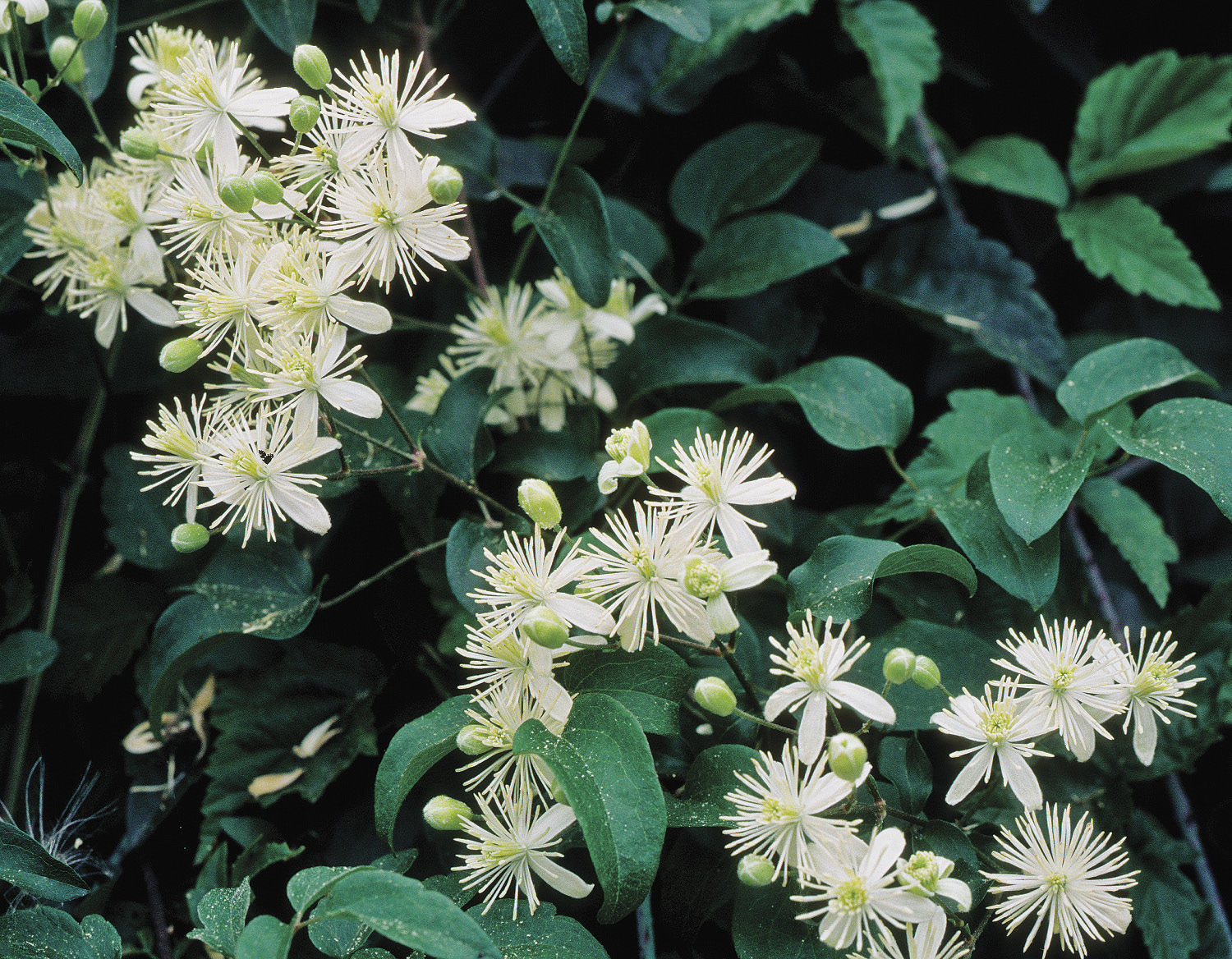
It seems like the hardiest plants always have the most unappealing names. Ground clematis (Clematis recta and cvs.) fits right in, but this Cinderella story is so lovely in the garden. This bush-type clematis is content to live out its days supported by a peony hoop or, better yet, happy to be given the freedom to billow out over a garden wall. Purple-tinged foliage and interesting seed heads make ground clematis attractive well after the clouds of pure white flowers have disappeared.
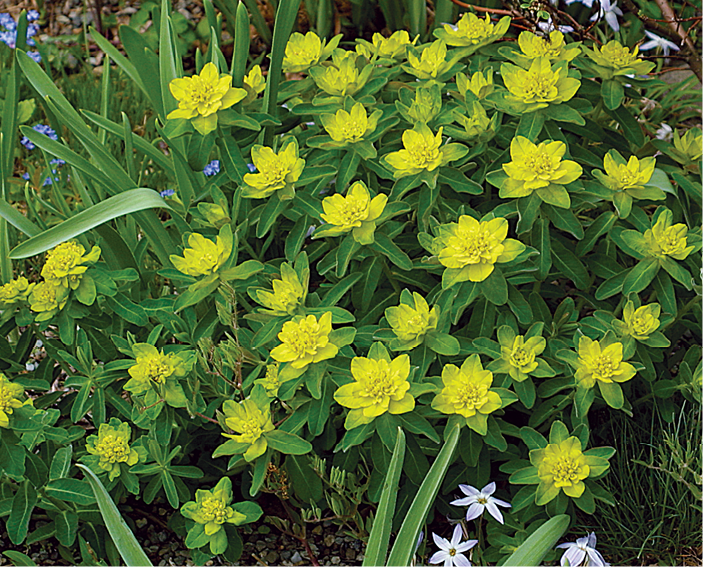
Cushion spurge (Euphorbia polychroma and cvs.) earns its keep all season long with cheerful yellow blooms emerging in spring above fine-textured foliage. Its good looks continue into fall with an excellent reddish fall-foliage color. Cushion spurge loves the hot sun and, once established, will even tolerate dry, poor soils. Clumps are not aggressive and are wonderful as single specimens in small gardens or in larger groups, if space allows.
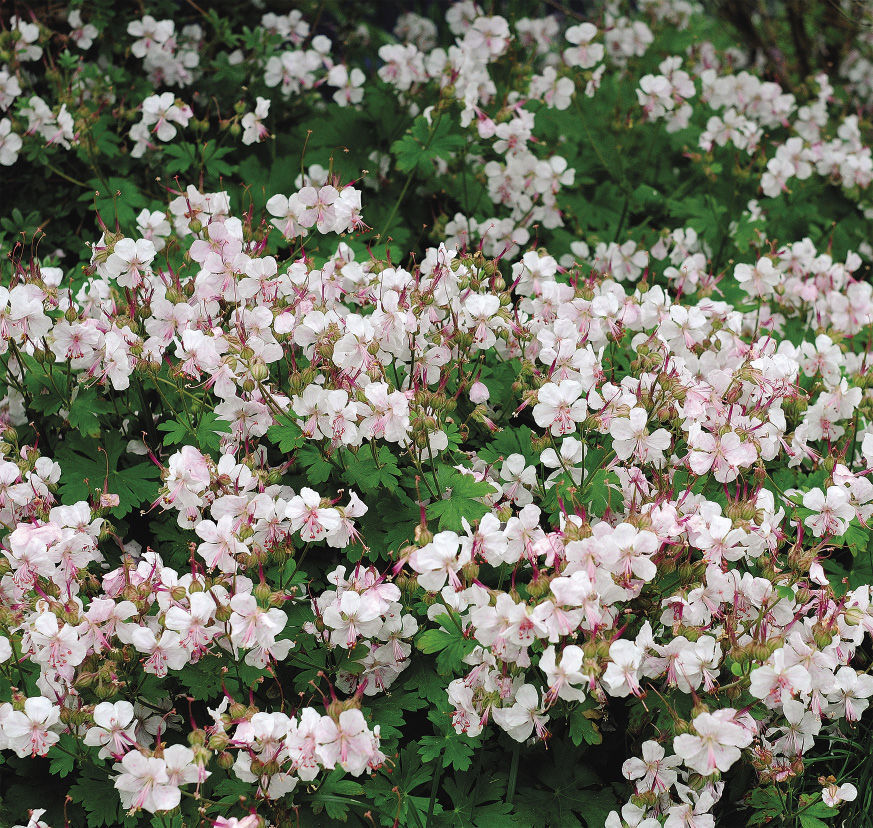
‘Biokovo’ hardy geranium (Geranium cantabrigiense ‘Biokovo’) is a superhardy, reliable hardy geranium that will endure just about whatever you throw at it. It can take sun, shade, and dry shade with ease. Unlike many perennial geranium varieties, ‘Biokovo’ is never floppy. Pink flower buds open to blush-colored flowers in spring. The foliage is attractive throughout the season and turns a pleasing orange-red in fall. This excellent ground cover is bulletproof in every respect.

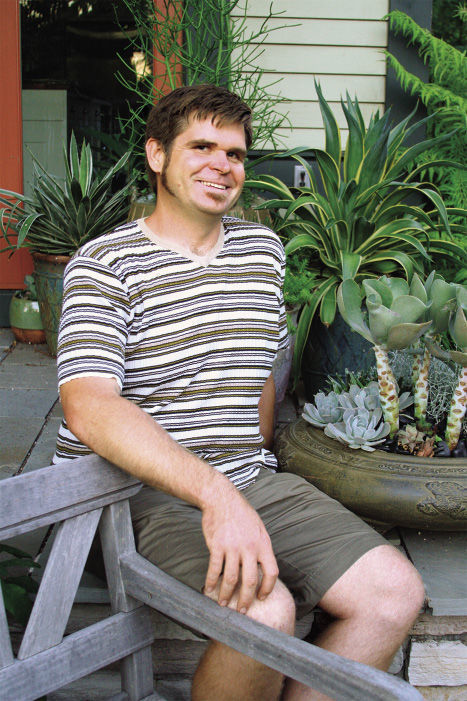
Photos: millettephotomedia.com; Joshua McCullough/phytophoto.com; Jennifer Benner; Nancy J. Ondra; Steve Aitken; courtesy of Vickie Danielsen; Dan Johnson; Michelle Gervais; Jerry Pavia
Sources
The following mail-order plant sellers offer the widest selection of the plants featured:
Big Dipper Farm, Black Diamond, Wash.; 360-886-8253; bigdipperfarm.com
Dancing Oaks Nursery, Monmouth, Ore.; 503-838-6058; dancingoaks.com
Digging Dog Nursery, Albion, Calif.; 707-937-1130; diggingdog.com
High Country Gardens, Santa Fe, N. Mex.; 800-925-9387; highcountrygardens.com

















Comments
Log in or create an account to post a comment.
Sign up Log in